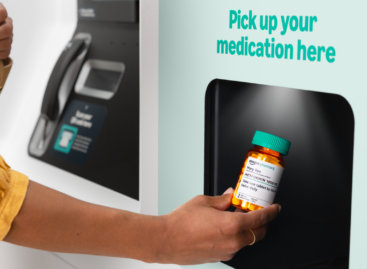Changing loyalty programmes in retail
On average two thirds of European household participate in some kind of loyalty programme operated by a retailer. There are big differences between the countries, though, as in Belgium every household owns at least one retailer’s loyalty card, while in Serbia the same proportion is 20 percent.


Tünde Turcsán
commercial director
GfK Consumer Panel
As for Hungary, 95 percent of household are loyalty card owners. The main objective of these cards is keeping customers, and another goal is strengthening their loyalty. Loyalty programmes also make it possible to introduce value-added services, and retailers can also get to know their shoppers better, collecting personal data about them and understanding their shopping habits. There are more and more loyalty programmes: the average Hungarian household owns loyalty cards issued by 3-4 different retailers. However, according to the GfK ConsumerScan Panel, these cards are only used with 41 percent of transactions. The big question is: Are loyalty programmes sustainable or should the money of retailers be invested in more effective marketing tools instead?
Experience is that loyalty card owners spend much more when shopping than those who don’t participate in such programmes. The main reason for this is that those consumers who spend more are more likely to join loyalty programmes. Fact is that loyalty programmes primarily reach existing customers. When a customer joins, they do start spending more, but this growth isn’t the biggest among ‘premium’ shoppers: those customers tend to begin spending more that represent medium or low level of spending. When deciding about entering a loyalty programme, shoppers weigh comfort and efforts made against the likeliness of getting any benefits from the loyalty programme. This is proven by the fact that households generally use their loyalty cards on those occasions when the sum they leave in the shop is big enough ‘to make the effort of taking out the card from the wallet’.
Classic loyalty programmes involving plastic cards are losing their popularity. The future lies in exploiting the opportunities offered by mobile devices: they are more comfortable and make a more efficient communication possible. On the one hand, it seems to be crucial for loyalty programmes to go digital; on the other hand, retailers can also partner with other companies, as the power of networking increases the strength of the loyalty programme – for both the consumers and the participating companies.
Connected data will shape the future, therefore several retail companies have already started rewarding their customers based on not only their past purchases, but also on their activities in social media. Customers still like some form or another of being rewarded for their loyalty, and they expect retailers to consider their purchases as an investment in the relationship between the two parties. //
Related news
More than loyalty – the myKiK loyalty program is 1 year old
🎧 Hallgasd a cikket: Lejátszás Szünet Folytatás Leállítás Nyelv: Auto…
Read more >Amazon Pharmacy launches in-office kiosks to speed medication availability
🎧 Hallgasd a cikket: Lejátszás Szünet Folytatás Leállítás Nyelv: Auto…
Read more >Tens of thousands of orders have already been placed in Kifli.hu’s new discount program
🎧 Hallgasd a cikket: Lejátszás Szünet Folytatás Leállítás Nyelv: Auto…
Read more >Related news
Christmas shock in commerce: for the first time, we can pay with bank cards in fewer places
🎧 Hallgasd a cikket: Lejátszás Szünet Folytatás Leállítás Nyelv: Auto…
Read more >Hungarian Confectionery Manufacturers Association: trends in 2025 and prospects for 2026
🎧 Hallgasd a cikket: Lejátszás Szünet Folytatás Leállítás Nyelv: Auto…
Read more >Most grocery chains will be open until noon on December 24th
🎧 Hallgasd a cikket: Lejátszás Szünet Folytatás Leállítás Nyelv: Auto…
Read more >






